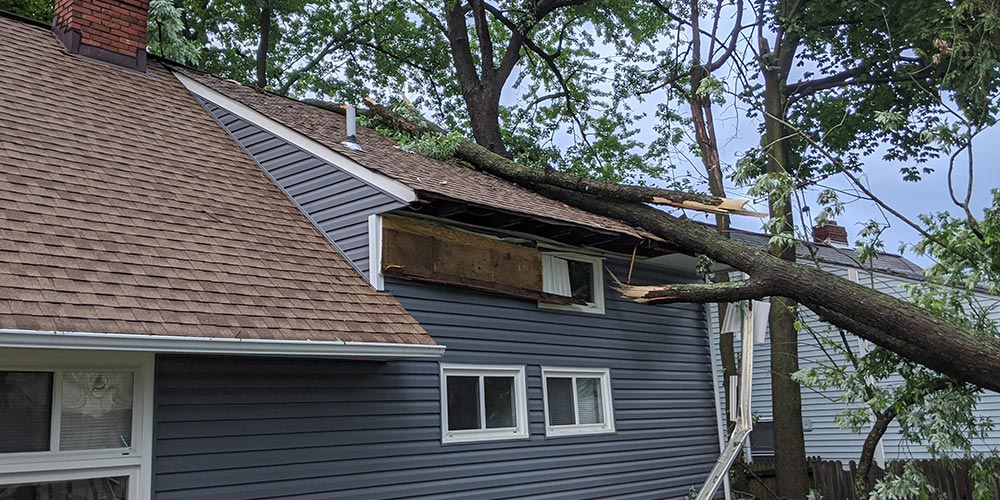
Should You Remove a Tree Close to Your House?
Trees have a lot of value to most properties. They provide shade, make the house look beautiful among many other benefits.
Unfortunately, they sometimes pose a risk to a property, and you have to remove them. Due to the many benefits they provide, many homeowners are often on the fence about whether they should remove them.
If this is you, here are signs that you should consider bringing down the tree:
The tree is at the risk of falling on your property
Many arborist services providers recommend that you remove a tree if it’s at the risk of falling into your home. A tree that is only close to your yard does not indicate that it will collapse, and you shouldn’t be in a hurry to remove it. If a tree has a budding bud at the end of its branch, it has a good chance of survival, so you should give it time.
When considering taking down a tree, remember to analyze your options. Consider the tree’s benefits and the potential damage it could do to your property. If the benefits outweigh the risks, you should let it stay.
The tree structure is weak.
The structure of a tree might be difficult to understand, especially when something causes damage. Trees can survive with up to 40% less bulk. However, the issue is not whether they will survive but rather the harm they can inflict if they shift their weight during a storm or in heavy winds.
A tree with roughly 40% meat loss may have structural difficulties and risk falling over. Though it is difficult to judge how rotten your tree is, an arborist can assist you in determining the extent of the damage and whether it’s wise to remove it or let it stay.
The tree is coming in the way you use your property
Trees can grow thick and wide, with branches reaching as high as your attic or roof. If a tree interferes with the usability of your property, it may be necessary to remove it.
While this is the case, before you proceed, you should always find alternatives. For example, you can build a patio around the tree, bringing life to a yard.
You can also place hanging lights around the large branches to offer night lighting and create a relaxing atmosphere.
Removing the tree will allow you to plant a new tree
Removal is a suitable option if you want to replace a diseased tree with a healthier species. It will benefit the ecology, and like in any healthy ecosystem, some species will have to perish so that others can thrive.
There is fungi growing on the tree.
Most fungi live on damaged portions of trees, and their presence implies a damaged trunk. Some species may also attack a healthy trunk. A diseased tree becomes discolored and wilts more frequently.
Mushroom growth around the base indicates that your tree’s health is declining, and you may have to chop it down.
While this is the case, you should note that not all fungi are harmful to trees; in fact, some are beneficial.
Before removing the tree, find out whether the fungi are harmful or if you can get away with it.
The tree has invasive roots.
Depending on the species, trees can have horizontal or vertical roots. Horizontal roots have no boundaries and may reach into critical regions of your landscape. Invasive roots, on the other hand, have significantly more harmful qualities, which include:
- Destroying water and sewage pipes.
- Roots may interfere with the garden motif.
- Roots may cause harm to your house’s foundation.
Experts recommend that you prune trees with invasive roots if the root cannot be removed without harming the tree.
If the tree roots are risking damaging your property, it’s wise to remove the tree to protect its foundation.
Pests have invaded the trees.
Trees provide habitat for thousands of birds, rodents, insects, and reptiles. In most cases, you can get rid of pests, so you don’t need to remove them. Before you think about removing the tree, consider how to get rid of the pests. You should only consider removing the tree if you can’t eliminate the pests. These can be
- Snakes and scorpions (only in specific places).
- Aphids are insect larvae (similar to caterpillars).
You are experiencing harsh weather.
It is awful when extreme weather damages the beauty of trees. Some extreme situations may force limbs or trees to fall, causing property damage.
Thankfully, trees are robust and can resist even the hardest conditions if properly maintained. They also help to raise the value of your property. Before considering removal, it is usually a good idea to consult with a tree care specialist to find out whether the tree can withstand the weather or if you should remove it.
Bring down a tree in parts.
If you have done your analysis and consulted a professional, and they recommend removing a tree, you should remove it.
When removing young or old trees from narrow areas, you cannot just cut the base and let it fall. The best approach is to cut down the tree in sections and remove it one at a time.
Cut off the branches first, followed by the trunk using ropes. While the procedure appears to be simple, don’t attempt it on your own. You will need the proper equipment to securely remove a large tree from a confined location.
Remember that as a homeowner, you risk serious injury or property damage if you attempt to remove a tree on your own. Therefore, it is critical to leave the work to tree removal services Bethesda professionals.
When hiring professionals, ensure they are experienced at removing trees close to properties. The last thing you want is to hire a contractor who ends up felling the tree on your property, so be ultra cautious when hiring.
